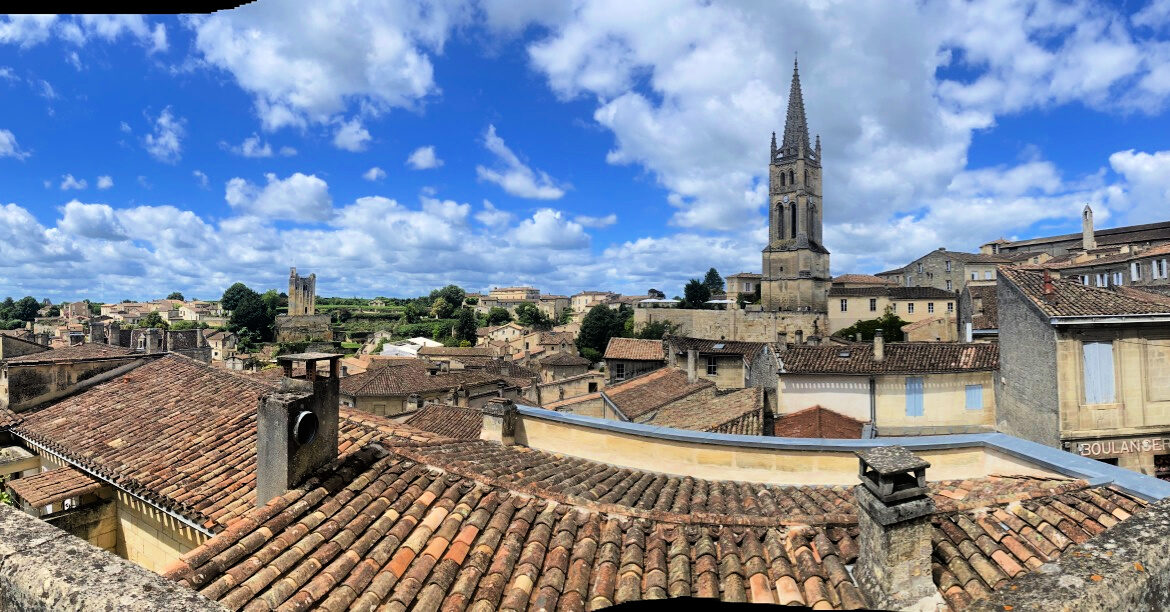
A Perfect Day in Saint-Émilion, France
Saint-Émilion is a charming village in Southwest France known for it’s outstanding wines and medieval architecture.
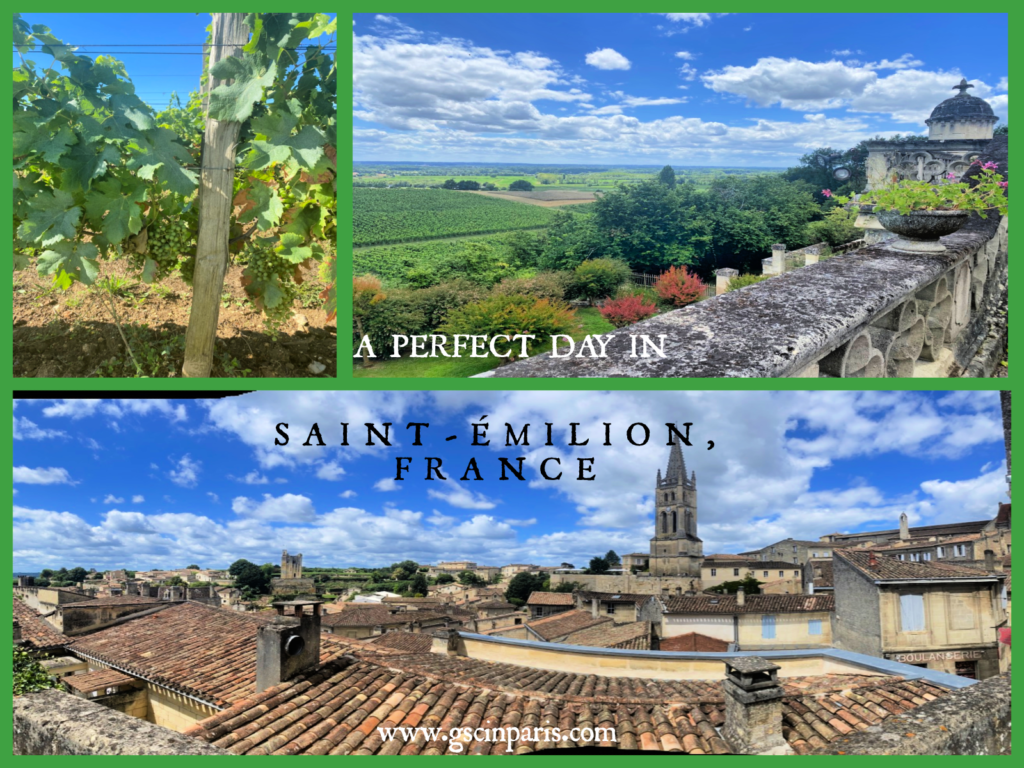
The weather couldn’t have been more perfect when we traveled from our VRBO in Lège-Cap-Ferrat to Bordeaux to meet our guide for the day. We met Luigi out in front of the Bordeaux Tourist Office. We boarded a luxury van and started the one hour drive (approximately) from the center of Bordeaux to the wine region of Saint-Émilion. For years, this has been one of my favorite wines to drink. So it was no surprise that I would pick this region to visit during our trip to France. As we pulled away from Bordeaux and entered the wine region, the landscape became more and more stunning. Rows and rows of vibrant green grape vines set amongst beautiful, old chateaux and a bright blue sky.
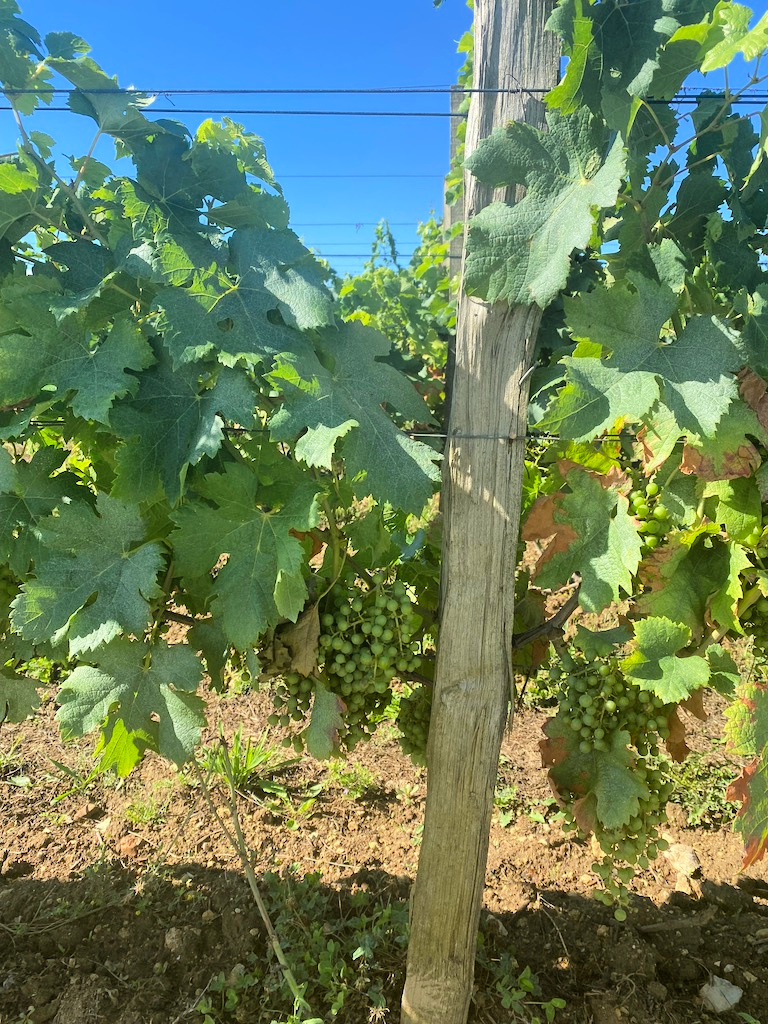
Normally, in France, you will need to book a tour to any vineyard. They don’t allow people to just drop in. However, if you don’t want to book a tour and you just want to be spontaneous, I learned that the tourist office in Saint Émilion publishes a list of two to four chateaux each day that are open for a visit without a reservation. You can access the daily list of wine chateaux here. However, we booked our tour through Orphus Tours and they were fantastic.
Chateau Balestard La Tonelle
In most parts of France, a ‘Chateau’ is a castle. However, in the Bordeaux region, a ‘Chateau’ is a vineyard or domain, usually a grand cru classé. Our first stop was the Chateau Balestard La Tonelle, a very old family owned winery. The current owner is in his 80’s and his two sons are involved as well, so it is very much a family business.
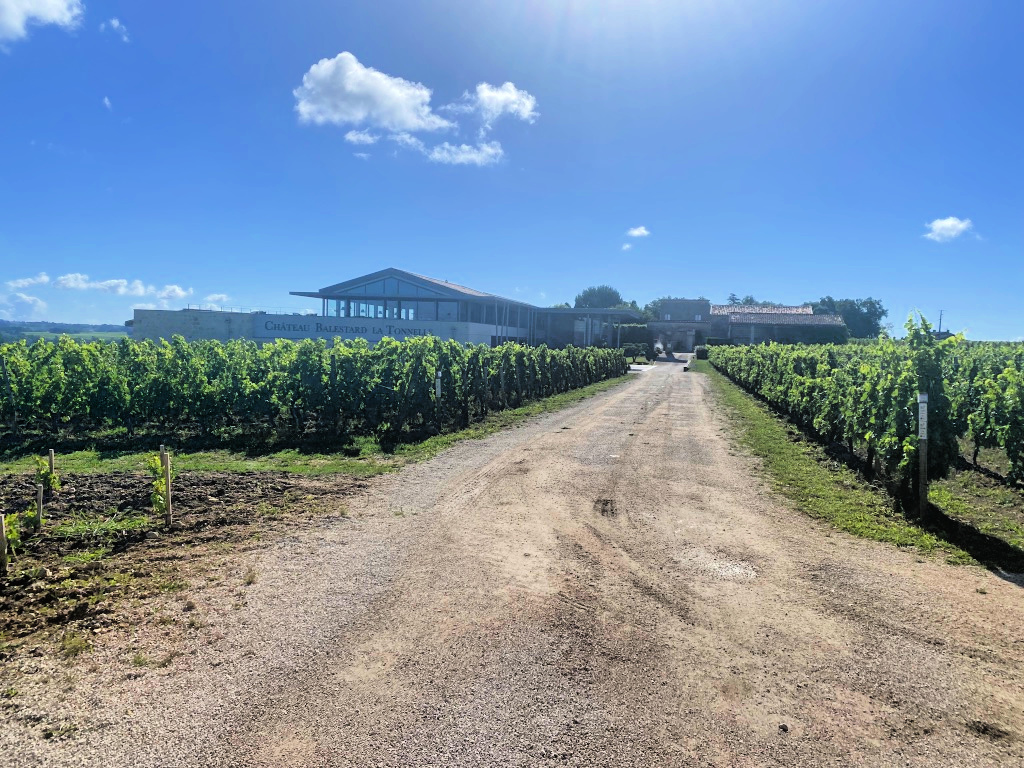
When you drive in, you are greeted by an ancient tower and behind it, a wall built in the 1400’s! The winery building is a beautiful, modern building, architecturally designed to make great wine and host sophisticated wine tasting events.
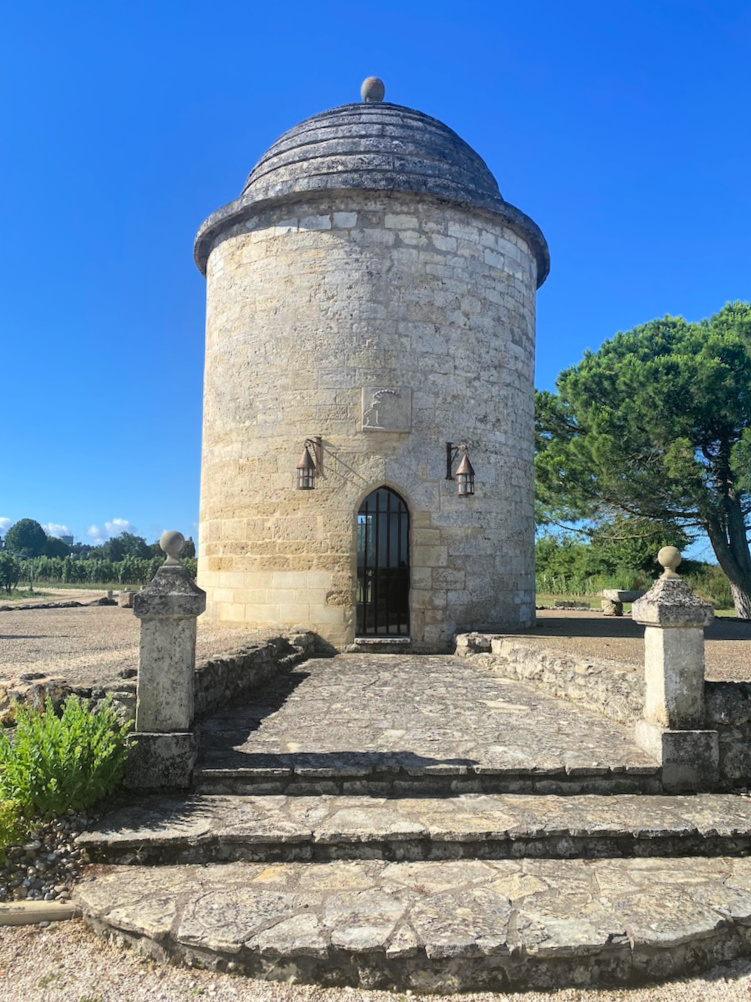
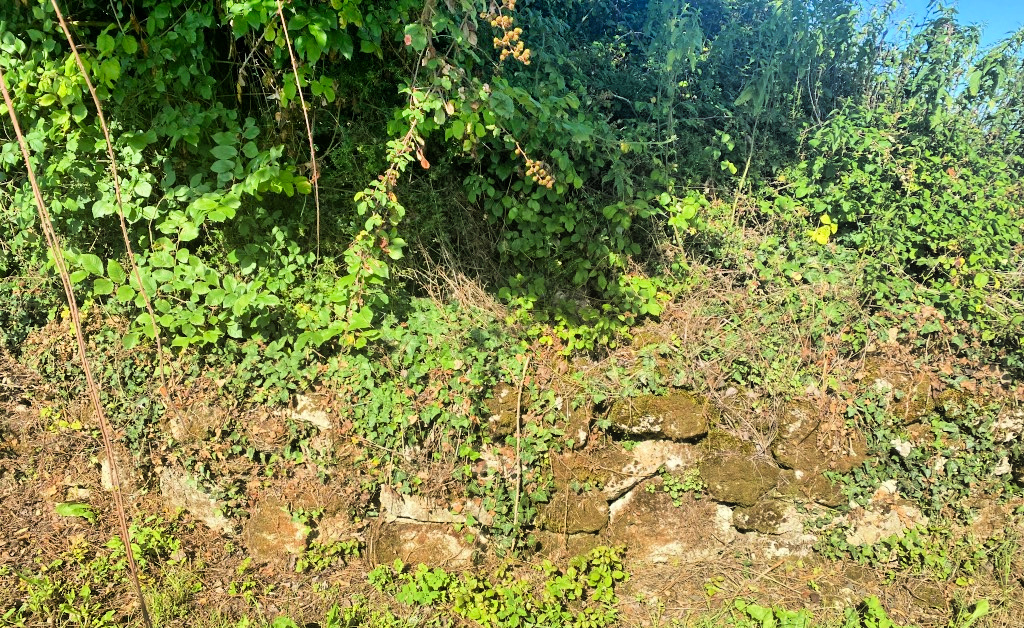
We toured the large room where wine is made. Next, we saw where the wine was stored, in hundreds of oak barrels.
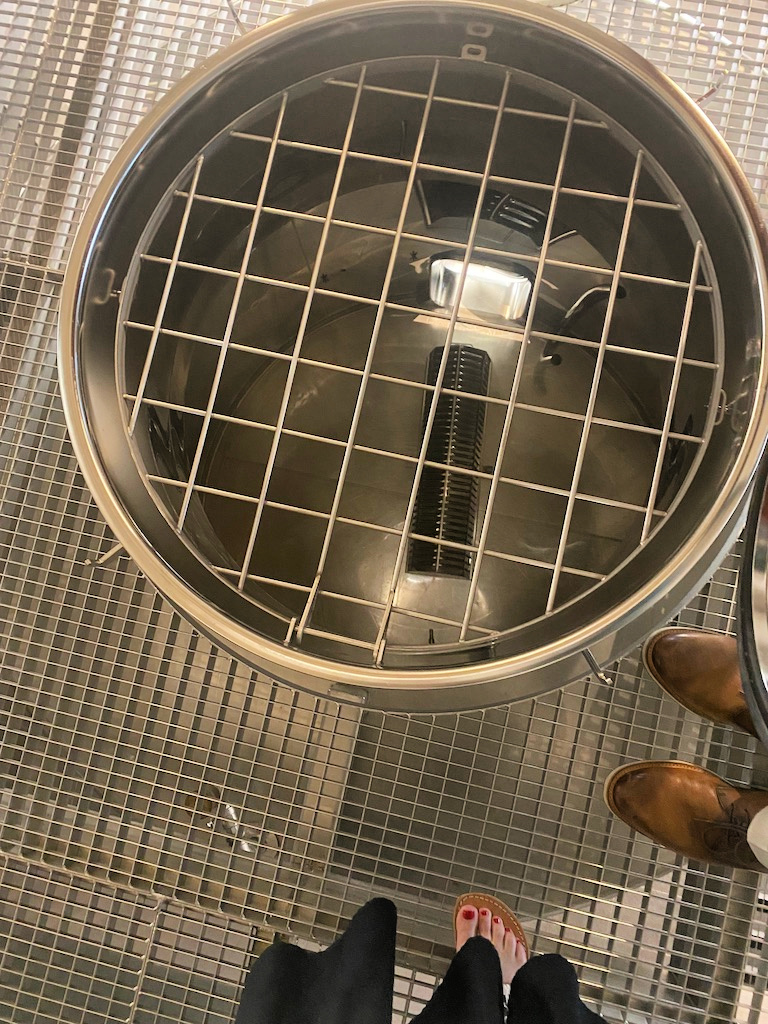
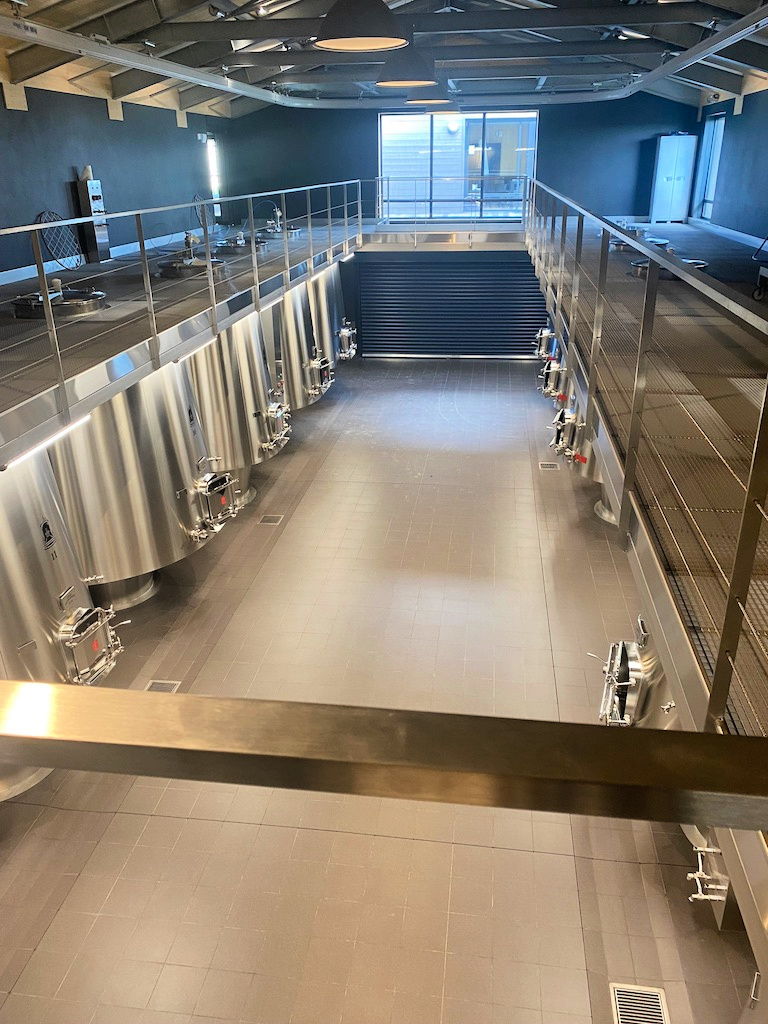
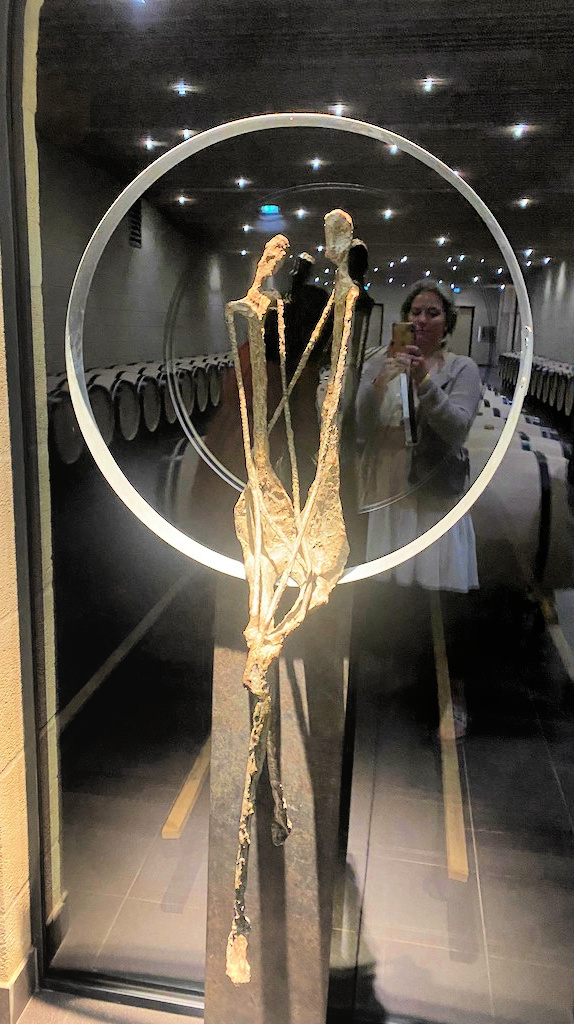
Finally, we headed upstairs to the tasting room. Even though it was only 10am, we tested three of their fabulous wines. Of course, we loved the oldest and most expensive one. We bought two bottles to bring home to the US!
Saint-Émilion Church and Catacombs
Saint-Émilion is a medieval village perched on a little hill. It is so special, in fact, that it was named a UNESCO world heritage site. From the top of the town, you have a spectacular view of the surrounding chateaux and vineyards.
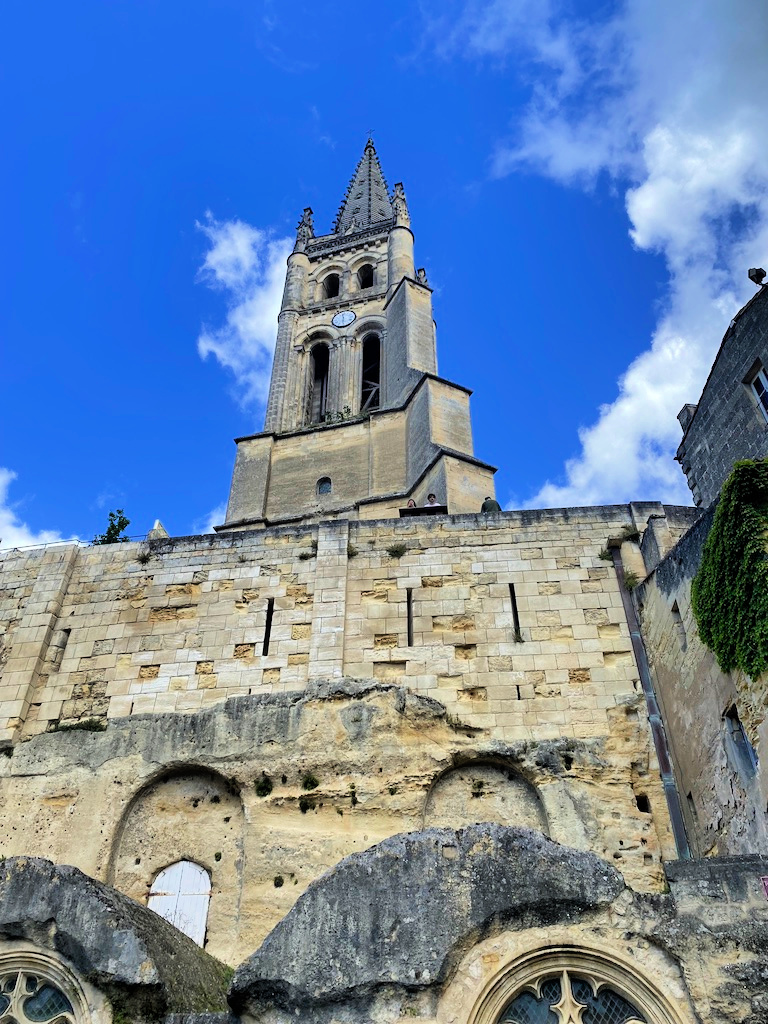
The Collegiate church (above ground) is a stunning monument built between the 12th and 15th centuries. This one you can visit by yourself, without taking a tour. Architecturally, the church is a mix of Romanesque and Gothic styles, reflecting the long period of its construction. The west door of the church was built in a pure Romanesque style during the 12th century while the north door is a Gothic one from the 14th century.
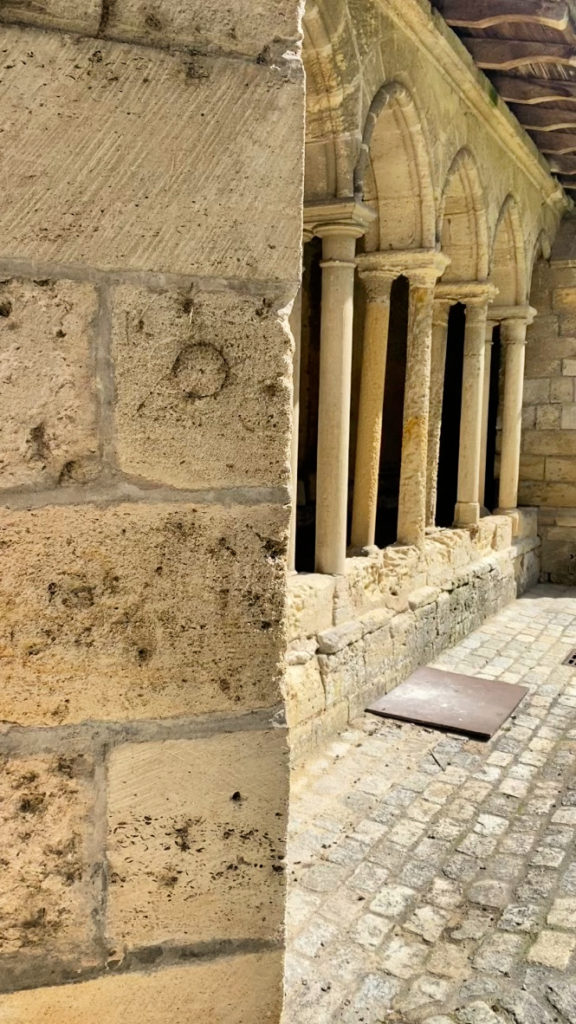
One thing I am so happy that I added to our itinerary was a tour of the catacombs and the monolithic church. Unfortunately, photography was strictly forbidden, so I am unable to post photos, but it is an absolute must see. The legend is that the Saint-Émilion, though he performed several miracles, was a hermit and preferred to live a life of solitude. So he hunkered down in a cave beneath the church. Over time, religious pilgrims would come through the town and many people wanted to be buried there in the catacombs to be near Saint-Émilion.
We toured the most famous monument of Saint-Émilion which is the 12th-century Monolithic church: it was carved from one stone. It’s the largest Monolithic church in Europe! It is hard to imagine how big it is from the inside. Again, I wasn’t allowed to take pictures but be sure to book this tour!
L’Apocolypse by French Artist François Peltier
In the cloister area, there was a fantastic mural on the wall. This monumental fresco entitled “L’Apocolypse” was painted by the artist François Peltier. Located in the cloister of the St. Émilion church, the work measures 131 feet long by 16 feet high. The fresco depicts the Apocalypse. The artist tries to understand, interpret and bring to life this book of the Bible, full of symbols, prophesies and mystery.
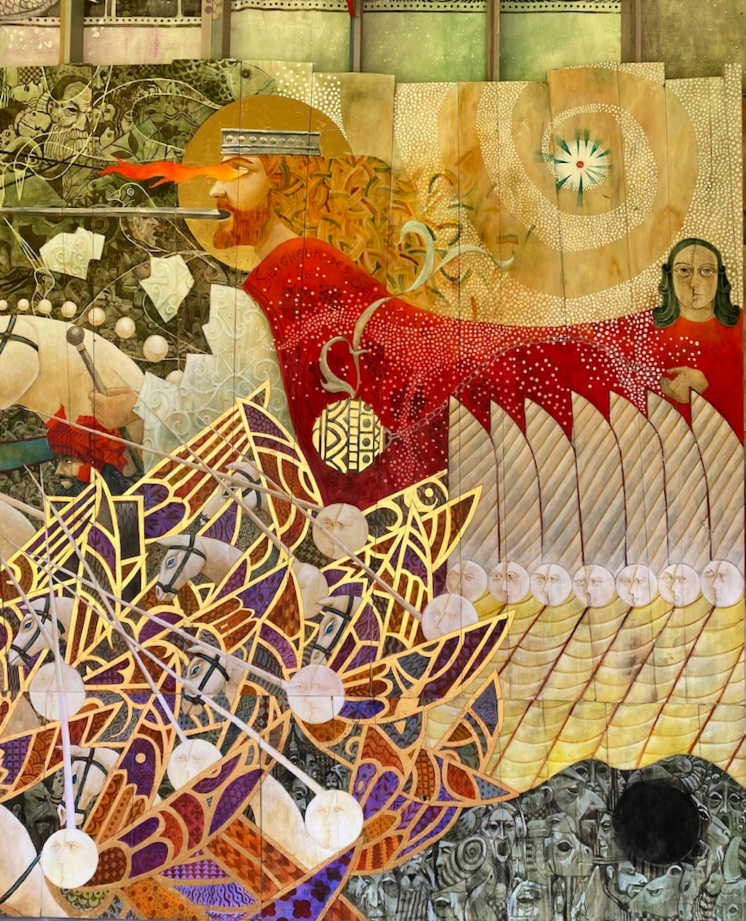
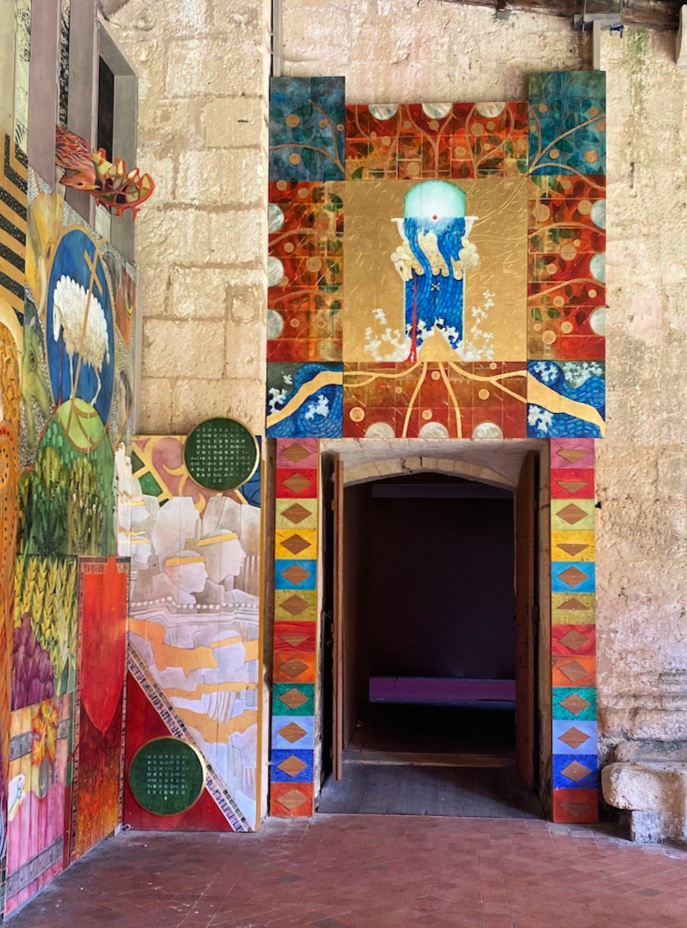
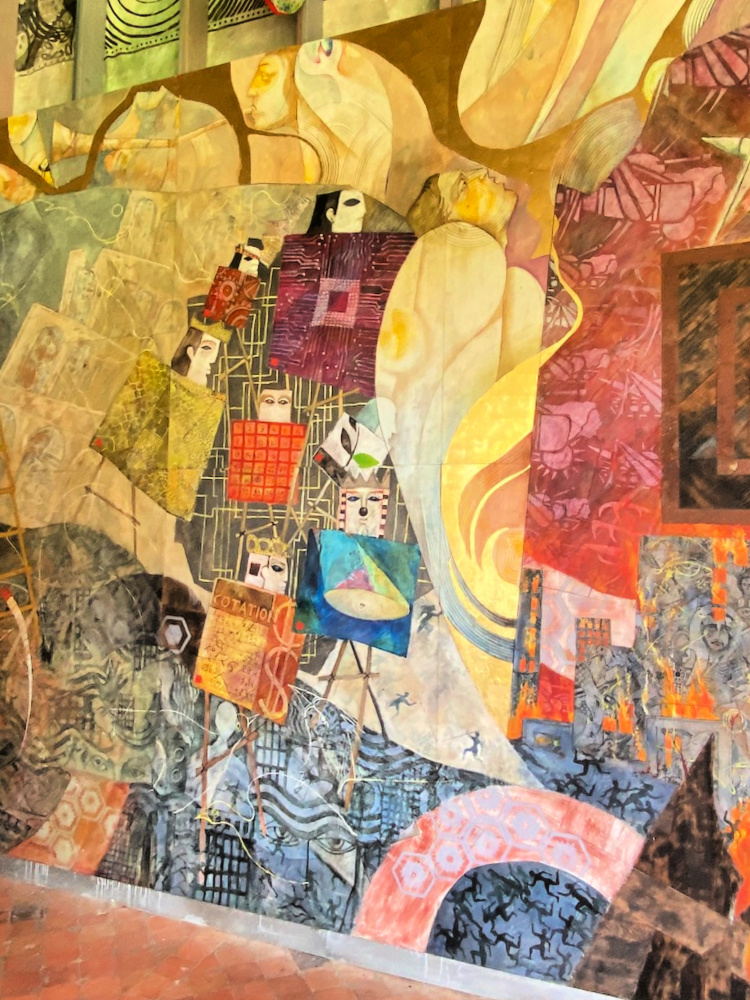
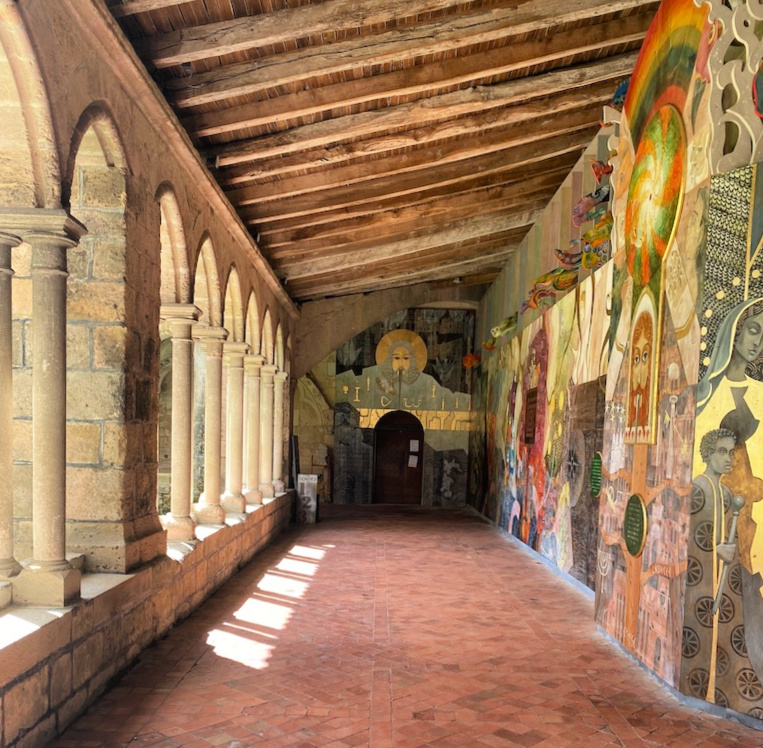
The Town of Saint-Émilion
Next, we walked around the small, charming town which includes cobblestones and beautiful, old medieval buildings. There were some steep hills to climb but the views made it worth it.
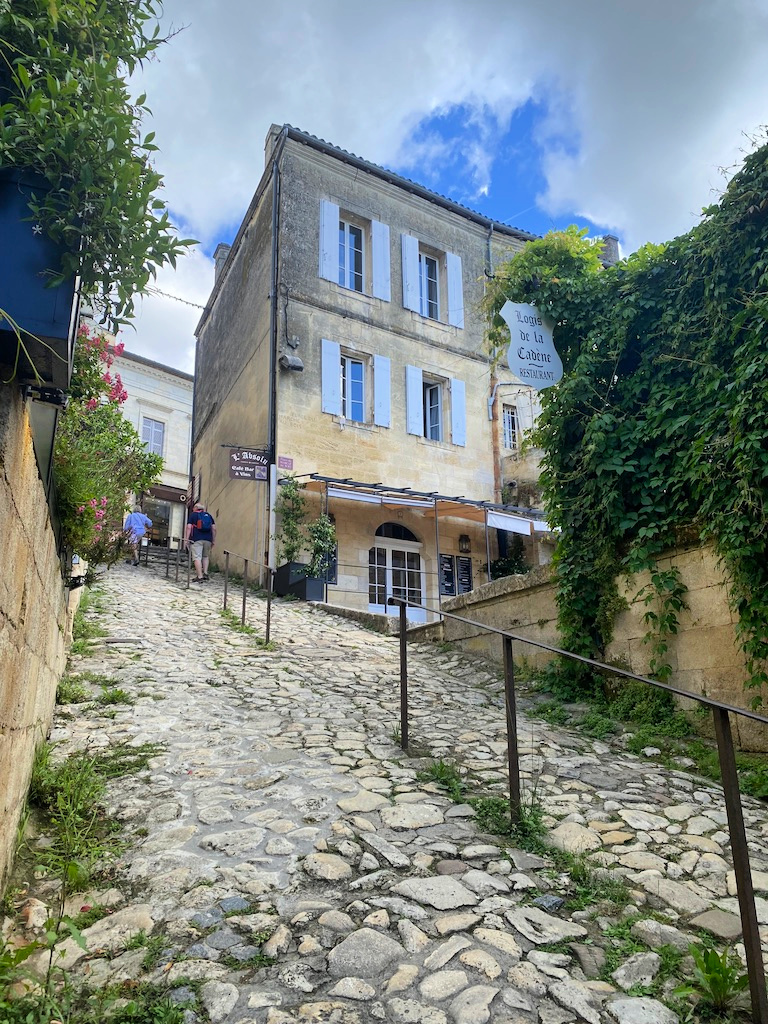
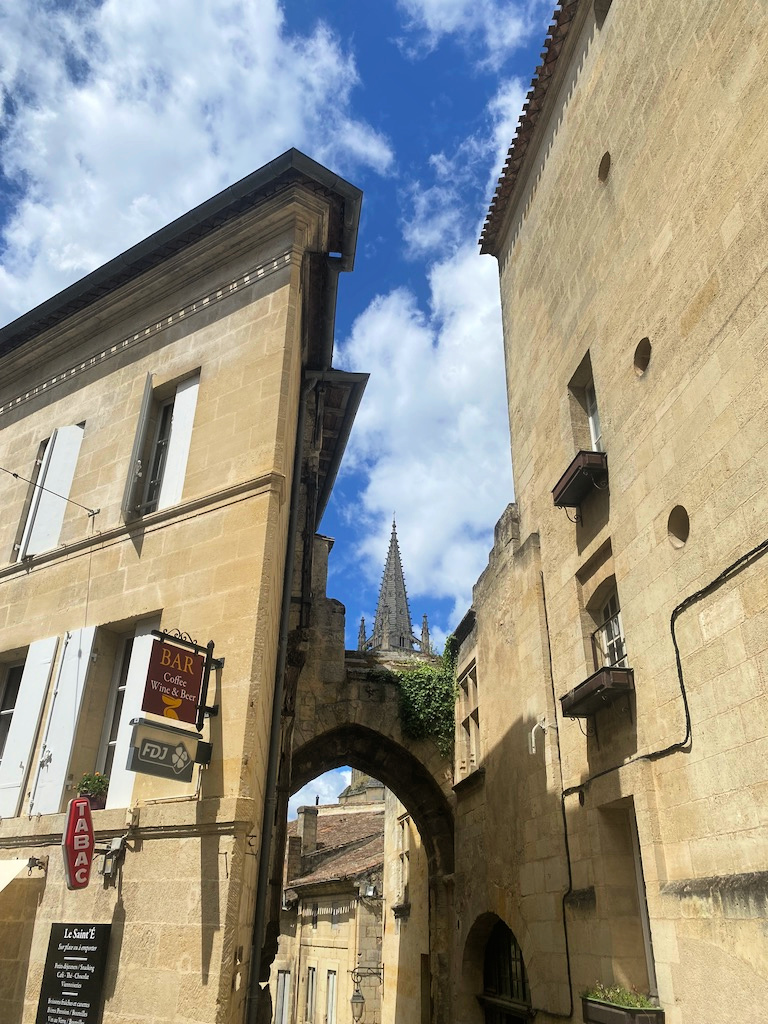
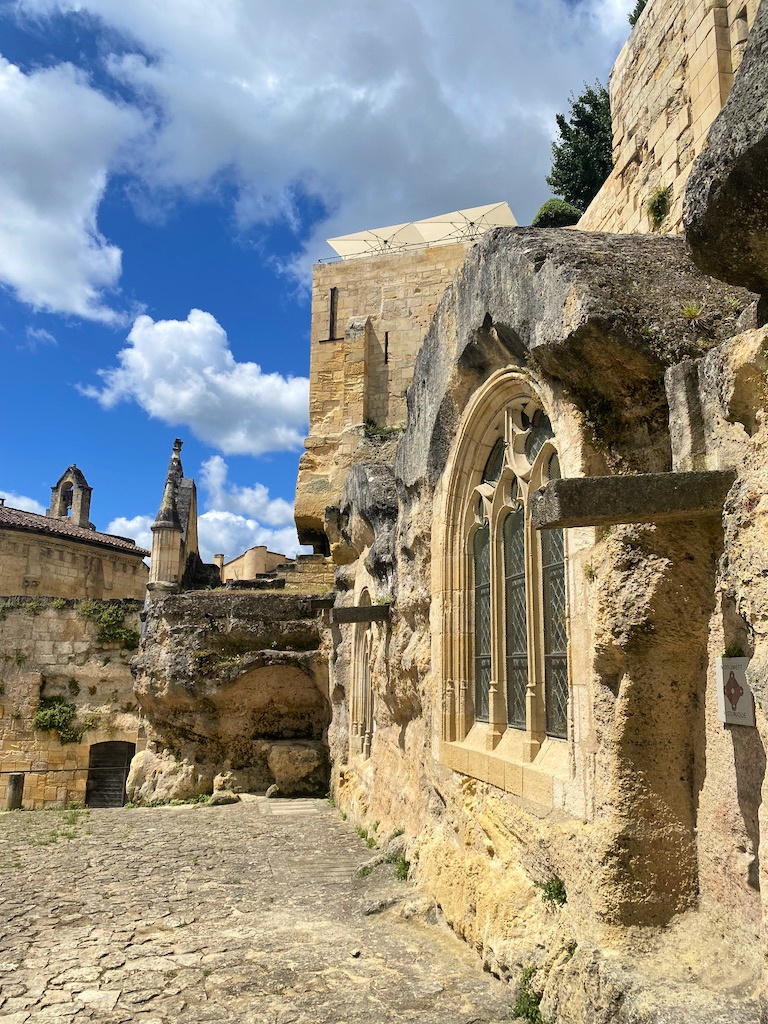
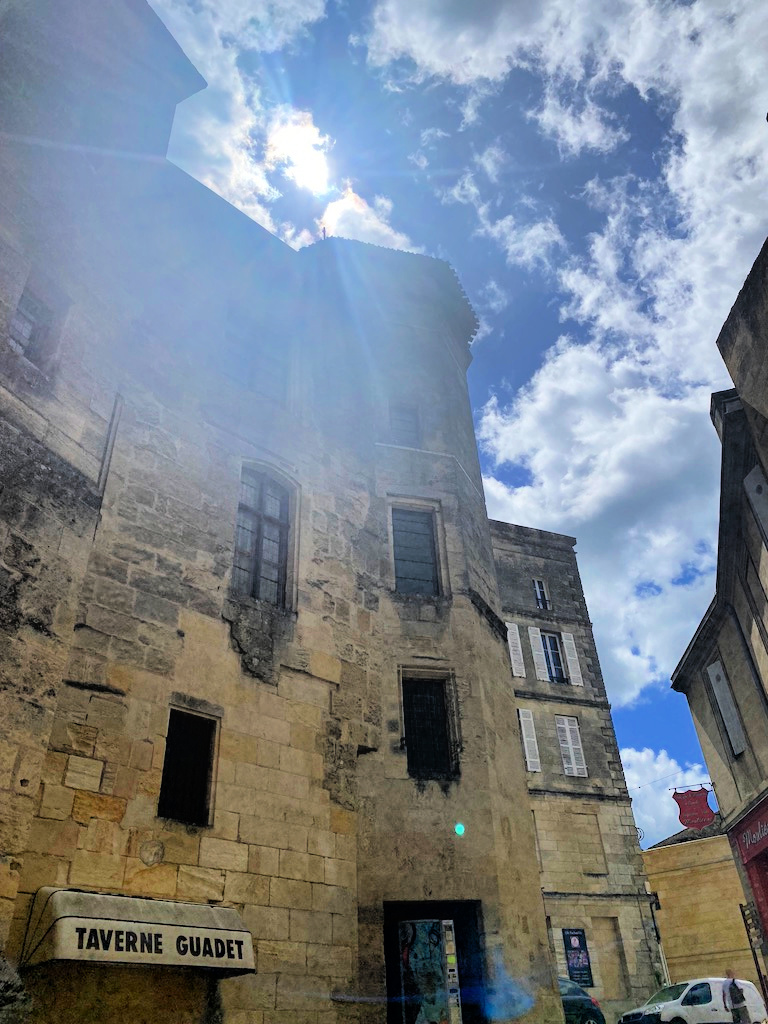
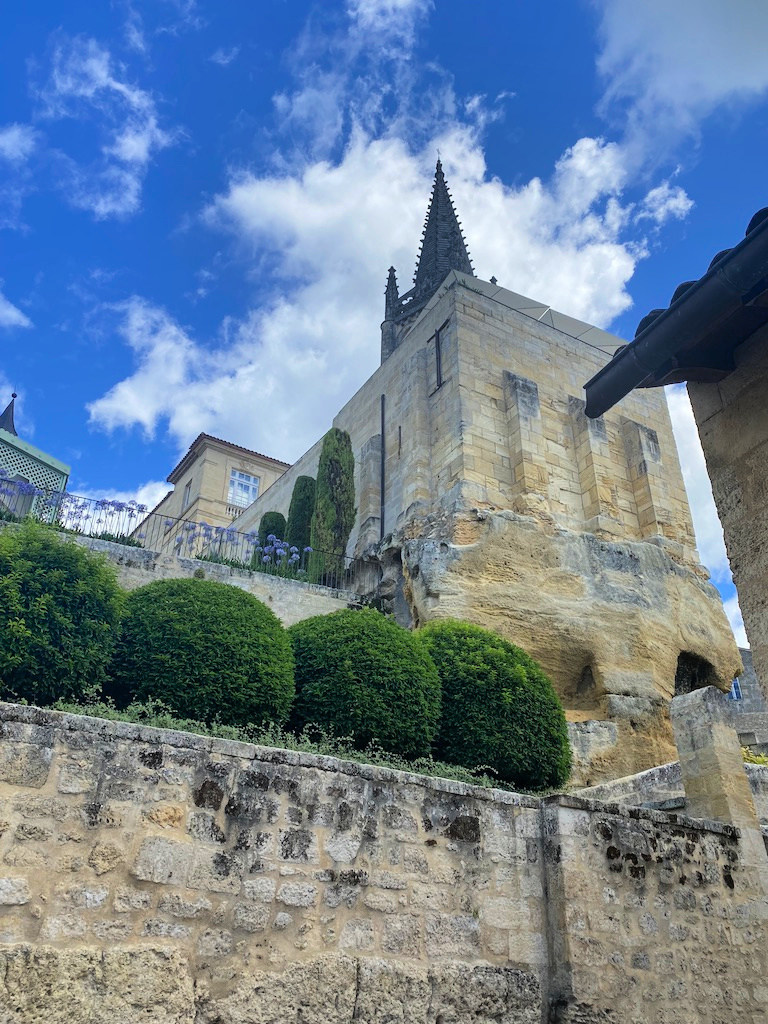
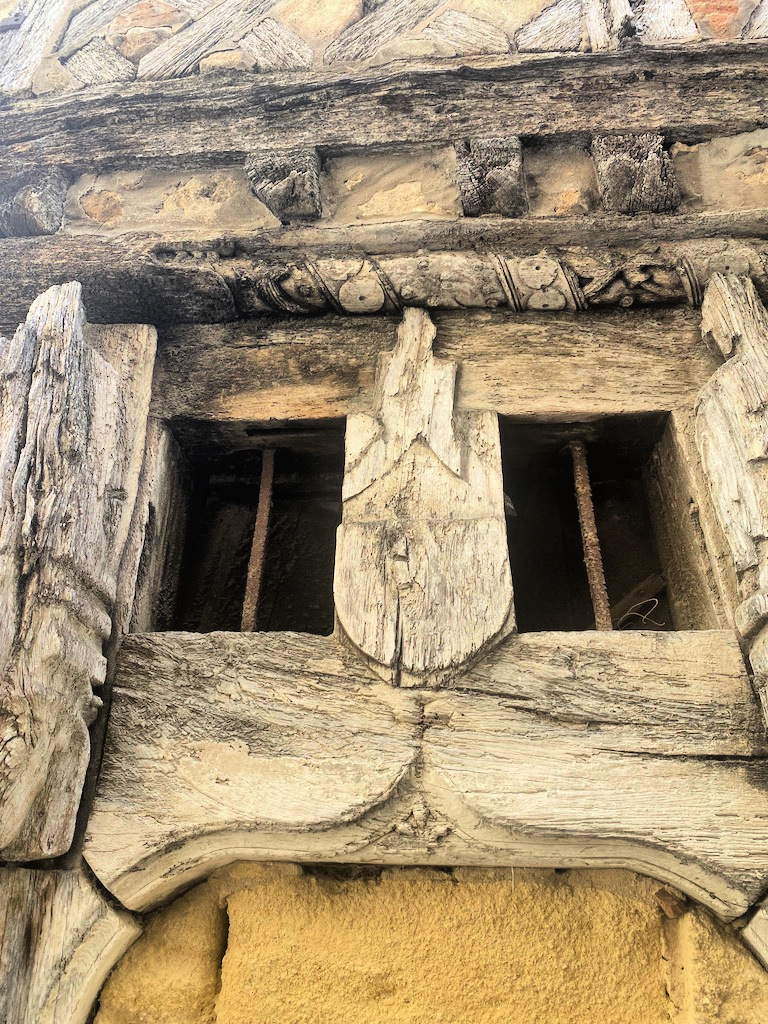
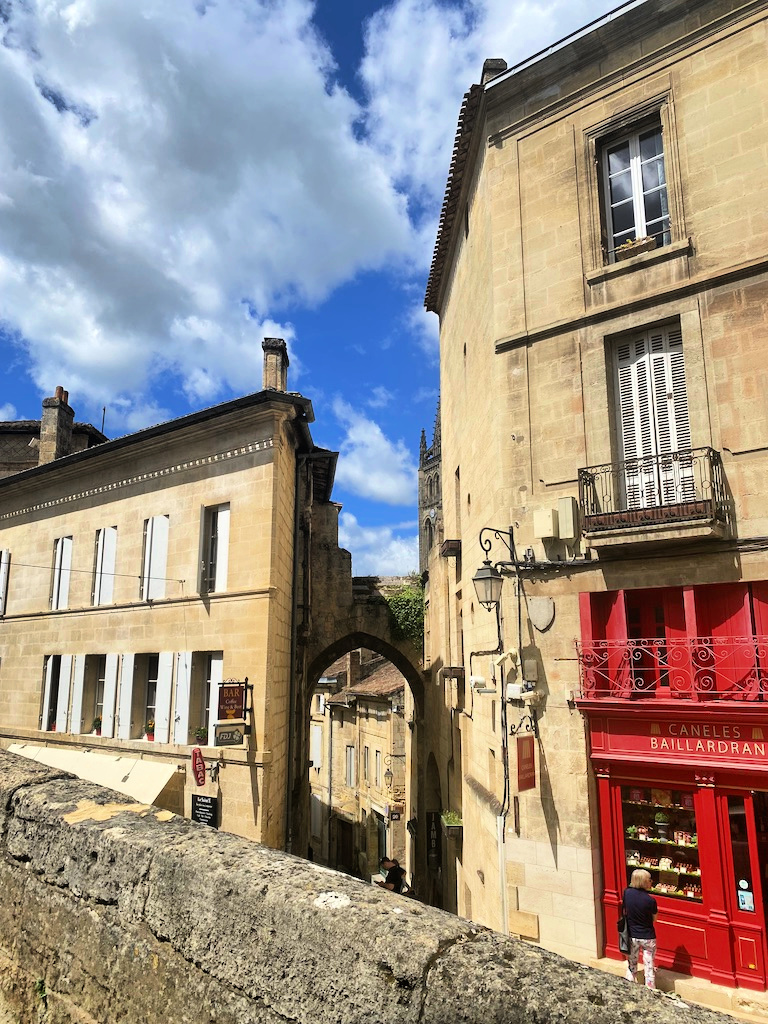
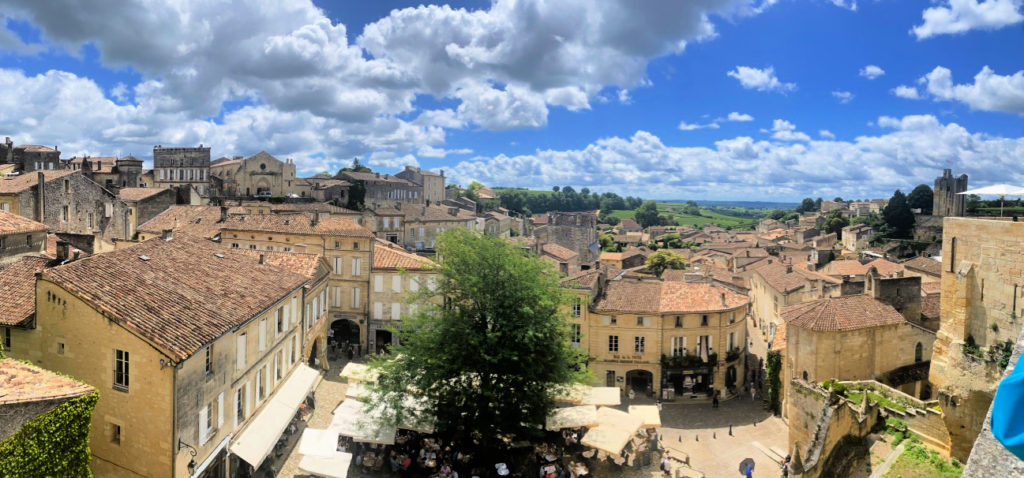
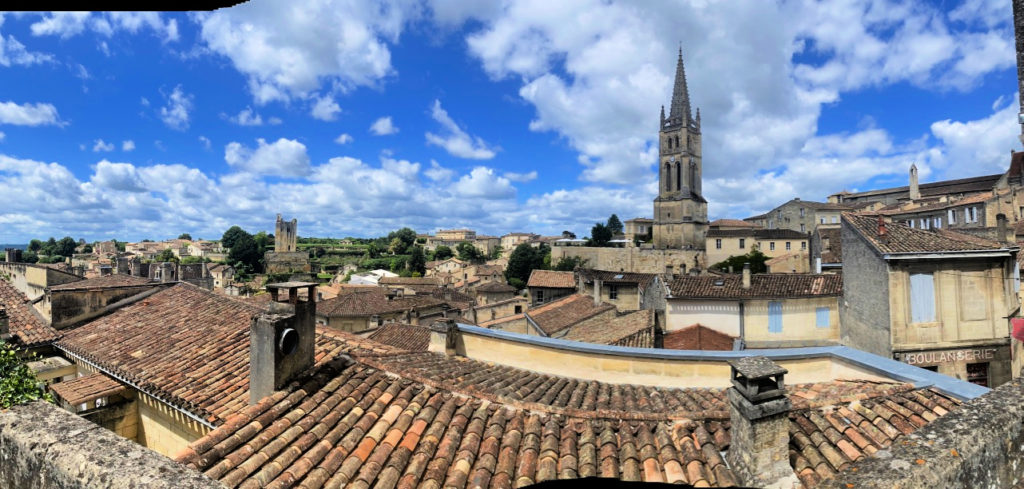
We had lunch at a very nice place called L’Envers du Decor and ordered a very fine bottle of St. Émilion wine, of course.
Chateau de la Rivière
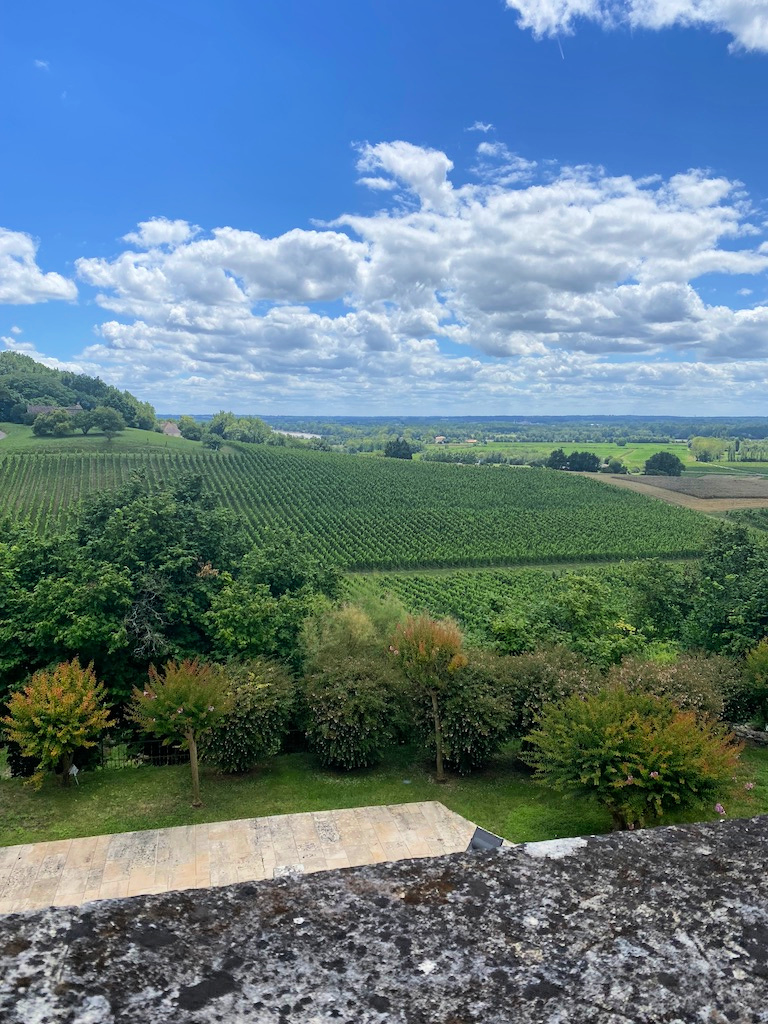
After lunch, it was time to say good-bye to the charming village and head to another winery for a tour and a tasting. This time, we left the St. Émilion appellation and went to the Fronsac region to tour a fantastic old chateau called Chateau de la Riviére. The architecture of this building was stunning. It had been revitalized in the 1800’s by a student of Violet-le-Duc, the very architect who did the restoration of the Notre-Dame Cathedral in Paris in the 1800’s. Small world!
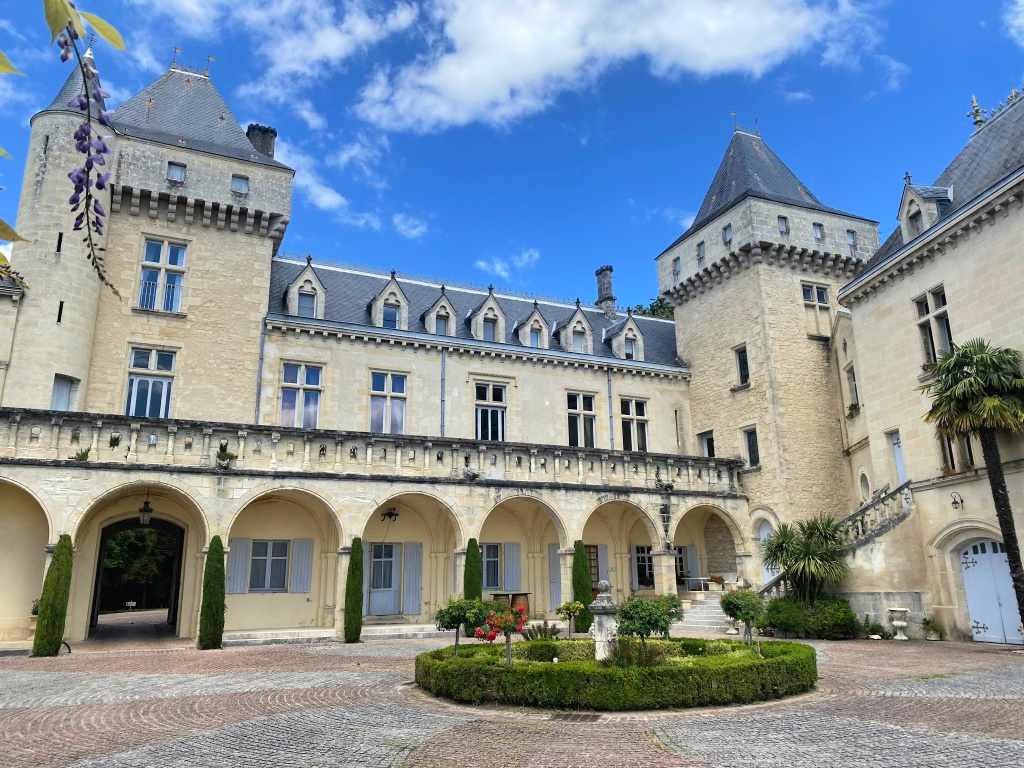
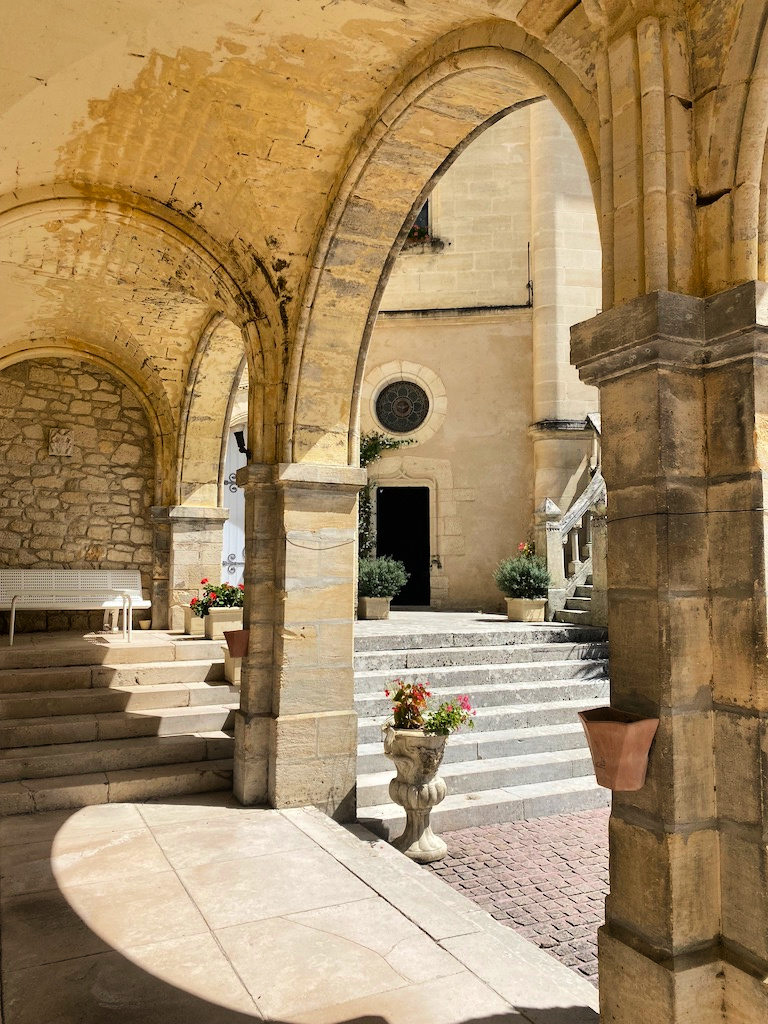
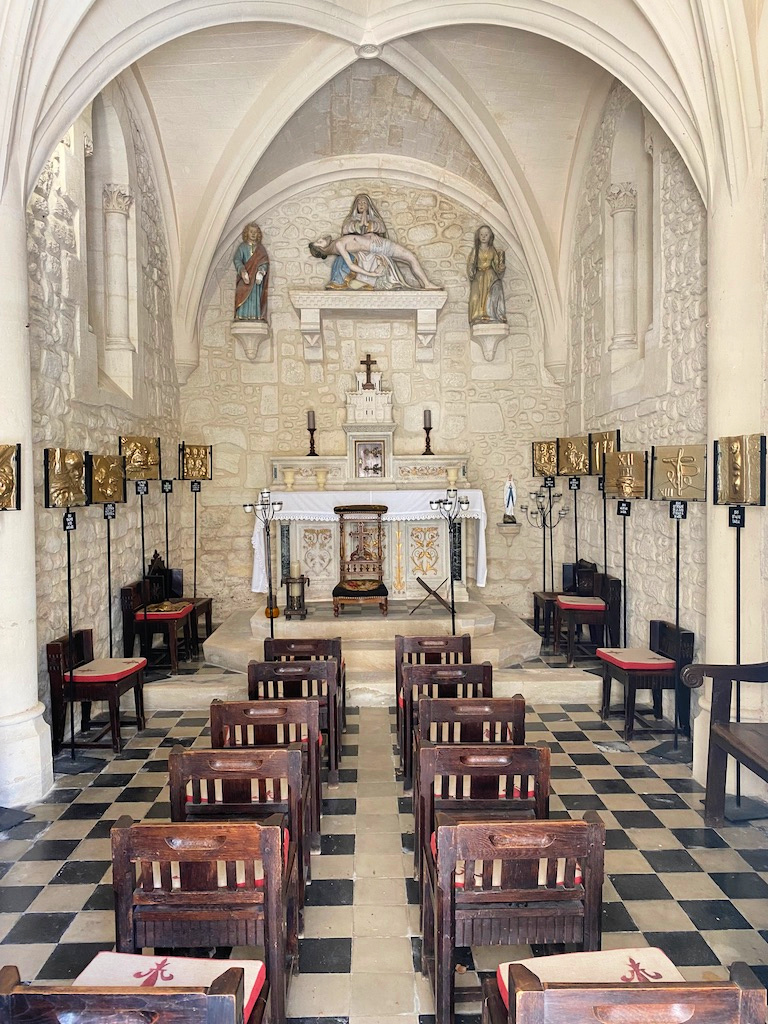
This chateau also had it’s own underground caves and a fascinating history. As we toured the dark tunnels beneath the ground, we saw hundreds of bottles stored in the wall of the cool caves.
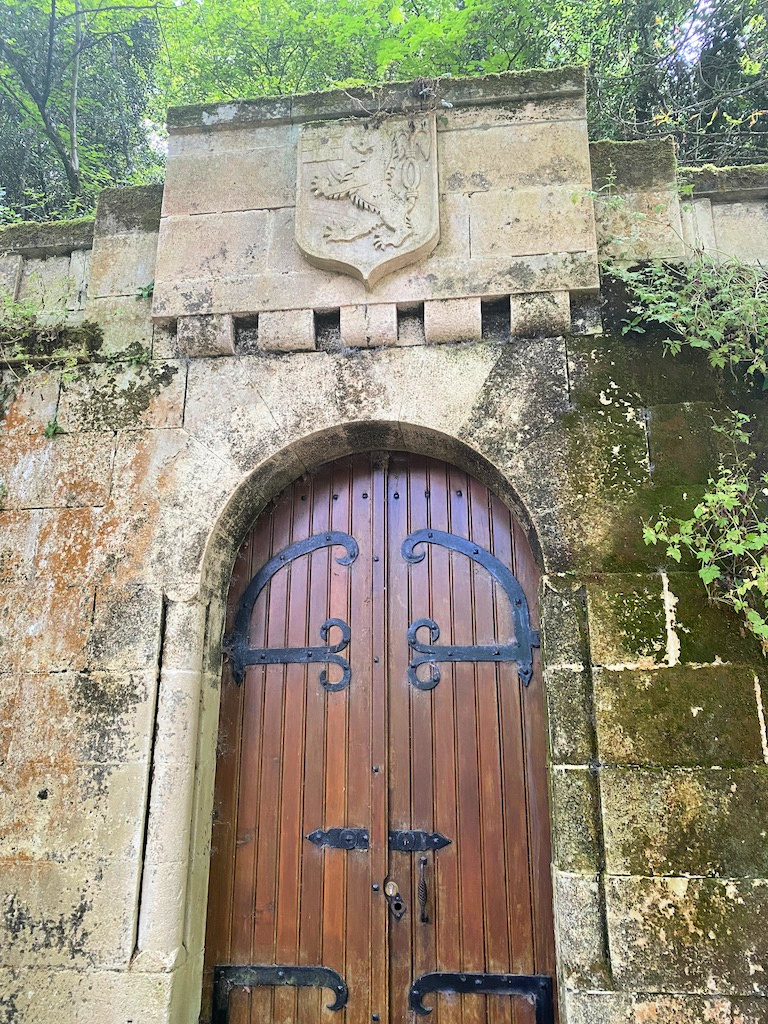
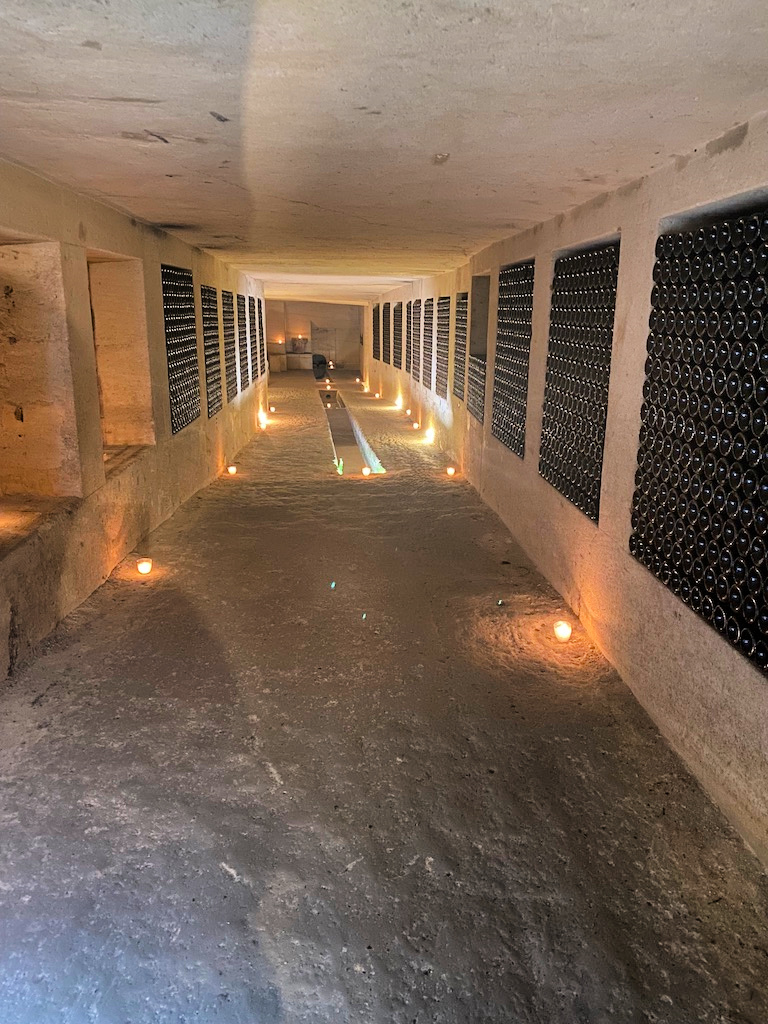
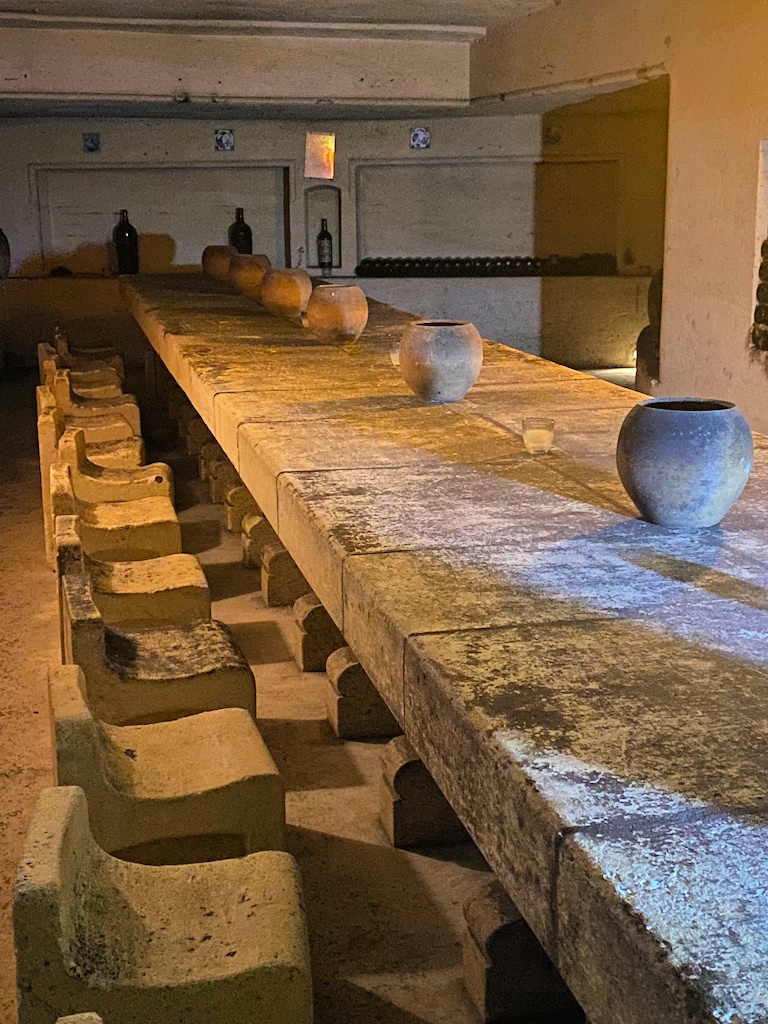
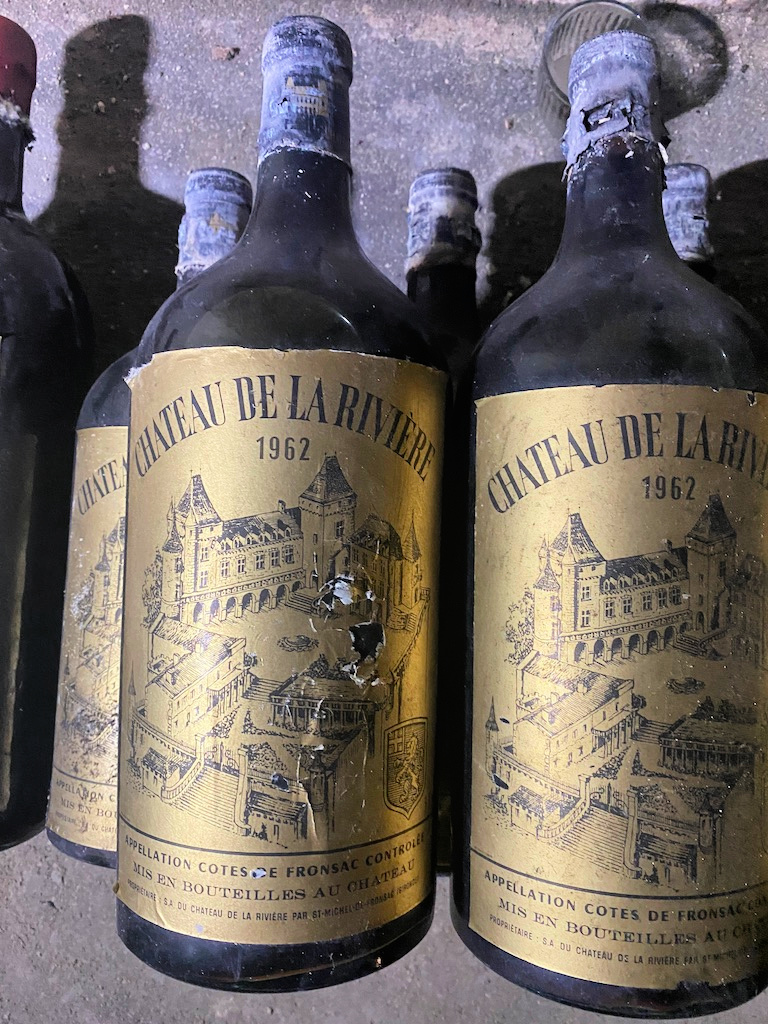
Our guide explained that nazis had overrun the towns of the wine regions during World War II and villagers and winemakers worked hard to hide the wine and keep it out of nazi hands. She also explained at one point, members of the Resistance were hiding out in one part of the vast underground cave while nazis were on the other side of the cave, unaware of the resistance fighters’ presence! Seeing actual sites where historical events took place really brings this history alive. When we finally emerged from the caves, it was time to taste a variety of wines produced by this chateau and they were all delicious.
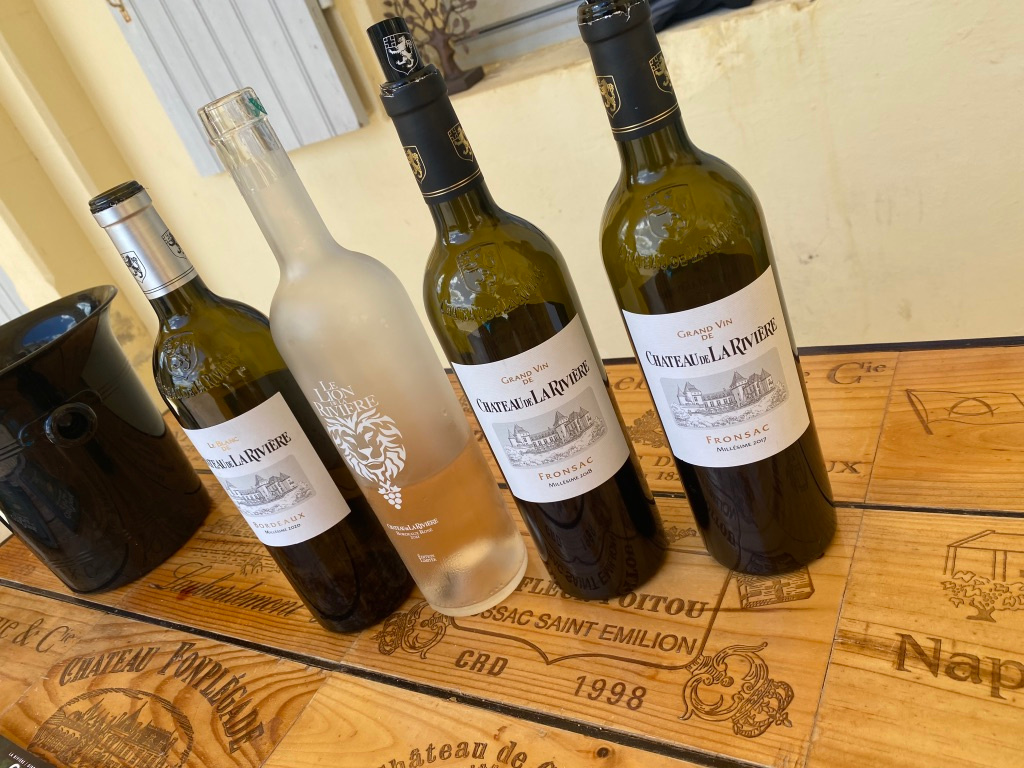
Time to Say Good-bye
By 4pm, we were ready to say good-bye to this area. Our wonderful guide, Luigi, drove us back to Bordeaux and dropped us off at the Tourism Office. We then went to a phenomenal wine store called L’Intendant Grands Vins de Bordeaux. All of the wine there was from the Bordeaux region. As you spiral up the staircase, the wines are more and more rare and expensive. We bought a few more bottles to bring home to the US. We then enjoyed a beverage at a charming bistro on the main Place in Bordeaux in front of the opera building and watched people go by.
If you enjoyed this article, you might enjoy reading:
France Planning 2022: Bordeaux
Passionate about Paris’ Fondation Louis Vuitton: a ‘Magnificent Vessel’
Le Mont-Saint-Michel: Natural and Man made Wonder
5 Must Read Books for Your Trip to Paris
The Château de Chenonceau: the Ladies’ Château
Notre Dame de Paris: How a Building Can Break Our Heart

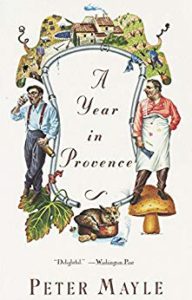






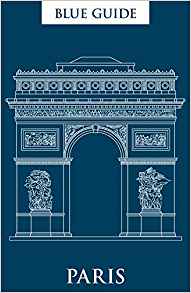

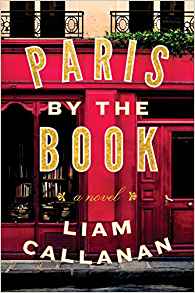



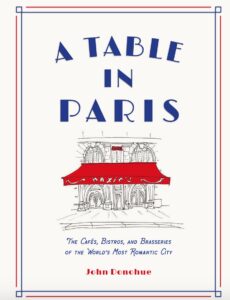

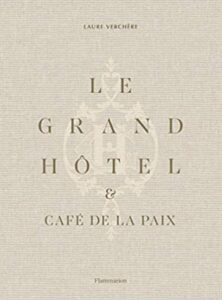

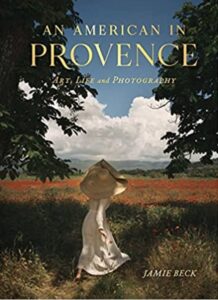

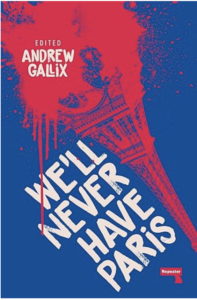
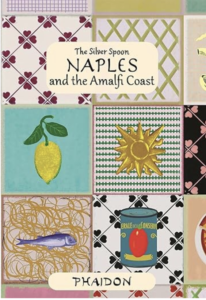

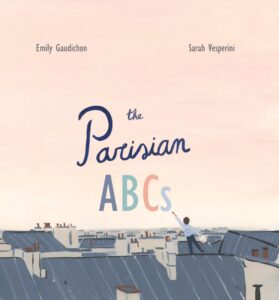


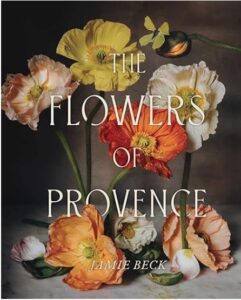

Leave a Reply